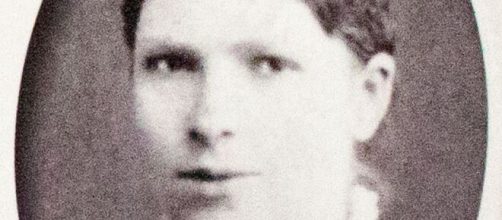Too many press announcements about the new book “The Van Gogh Sisters” make much of their selling 17 paintings to fund psychiatric care for the youngest sibling – Willemina, nicknamed Wil. As notable as that factoid is (gleaned from hundreds of the sisters’ unpublished letters), another revelation of no small significance about Wil gets glancing attention. Likely because the revelation doesn’t tie to Van Gogh. Instead, it concerns the plight of women in his time.
Untold story
While Van Gogh’s brother Theo has gotten a ton of ink over the years, how many of us even knew that he had sisters let alone three of them.
And while none were artists, Wil’s story warrants attention. To his credit, the author, Dutch art historian Willem-Jan Verlinden, noted on his website that his book about the sisters allows a look at the changing role of women in the 19th and early 20thcenturies, including the start of the feminist movement.
Wil, a world traveler, took part in the early feminism movement in Paris toward the turn of the century. According to the Van Gogh Museum, she was the only sibling who wrote to the artist when he was confined in a psychiatric hospital. She shared his love of art and literature. They were close. But again, this information about Wil relates to Vincent, even down to her confinement in a psychiatric hospital where she spent the last 40 years of her life - and perhaps unnecessarily.
As Verlinden told The Guardian, her condition - dementia praecox – (schizophrenia) could have been treated with medication. At the time, he said that condition got you sent to an asylum.
Bigger picture
Clearly, "The Van Gogh Sisters" is about more than how his paintings paid Wil’s medical bills. One of sister Anna’s letters makes this unintentionally evident, saying that the only book occupying Wil’s time in her 40-year incarceration was Elizabeth Barrett Browning’s nine-book-long novel/poem written in blank verse called “Aurora Leigh.” This factoid says a lot about Wil. The poem is a first-person recounting of a life of loneliness and lament. You’re left wondering what Wil’s life kept her from.
The shooting
At least Artnet News acknowledged that Wil “lived a largely unhappy life.” Not only does The Guardian go on about Van Gogh’s “tragic life,” it repeats the story about his suicide, ignoring research in 2011 by Steven Naileh and Greg White Smith (Pulitzer Prize winners for their bio of Jackson Pollock) demonstrating that the painter was shot in the stomach by heckling teens.
Even without reading the Nailah/Smith book – “Van Gogh: The Life” - you can question the suicide story. The shooting took place a mile from his apartment in a cornfield where he was painting. Ask yourself, who shoots himself in the stomach to off himself? For that matter, who hauls an easel, paintbox, brushes, and canvases a mile away only to gun himself down and then schlep back the mile to die? And where did he get the gun? It seems fair to say that the press has skewed the stories of both Vincent and Wil.


